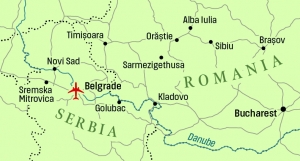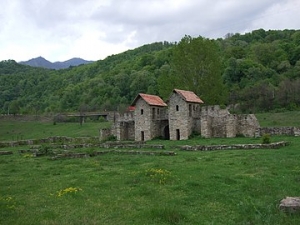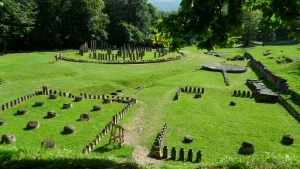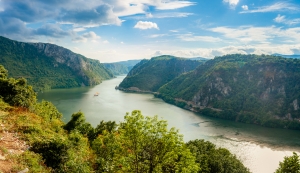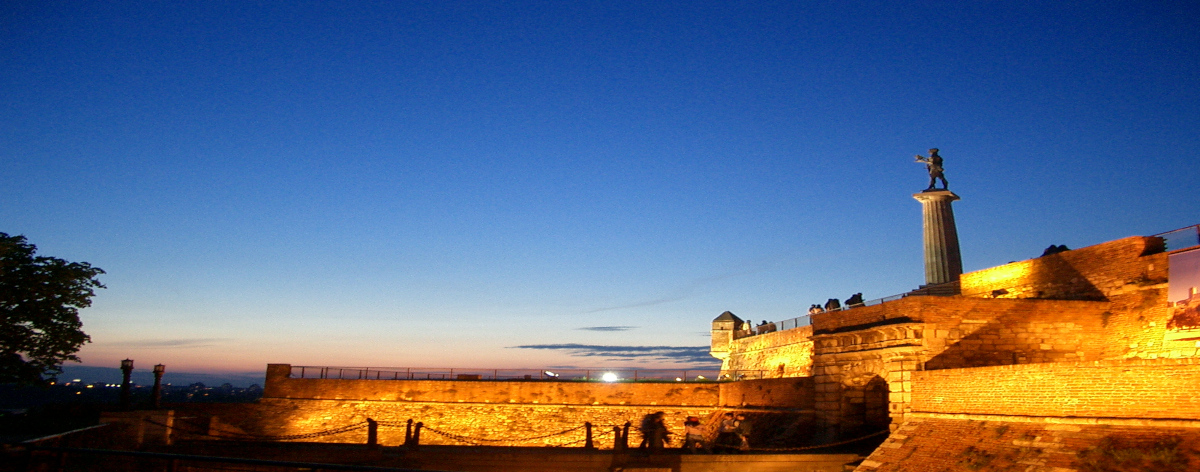
25th June - 3rd July 2027
(9 Days)
Expert Historian : Oliver Gilkes
Contact us - use the button below to receive more information
Your Holiday Essentials
25th June - 3rd July 2027
(9 Days)
3/4-star hotels, meals as indicated, drinks with dinner, all entrance fees, tour manager and expert historian throughout, optional travel from UK.
Expert Historian: Oliver Gilkes
Incl. travel from UK: N/A
Interested in this tour but not ready to book? Register your interest using the link below and we will keep you updated on the progress of the tour.
|
|
Tour Introduction
This is a tour for those who want to gain a better understanding of the frontiers of the Roman Empire and the remarkable campaigns of the Emperor Trajan (r. 98-117 AD) to counter threats from tribes north of the Danube in the two Dacian Wars (101–102 and 105–106). It is a journey rich in historical and archaeological discovery as we travel across a region shaped by centuries of political, military, religious, ethnic and linguistic flux. Central to the narrative is Rome’s presence on the Danube and the mighty river’s place as a delineation of Empire and a barrier against the ‘uncivilised’ non-Roman tribes to its north. But we also learn about the way Rome crafted these conquered areas in its own image and laid the foundations for the later development of the area most clearly reflected in the name of modern Romania and the language of that country with its roots in the Latin of the conquerors.
Starting in Belgrade (Roman Singidunum), with its origins in the Celtic world, we drive to Sremska Mitrovica (Roman Sirmium) and enjoy viewing the ruins of the Imperial Palace. At Viminacium we visit a Roman city and camp which has the distinction of having the largest number of Roman graves in any Roman site – some 16,000 to date! Passing above the huge gorge known in antiquity as the Iron Gates (now a reservoir) we marvel at the harsh landscape which would have been so challenging to Trajan’s invading army. We gaze down at the site of the famed Tabula Traiana inscription describing how Trajan ‘by excavating mountain rocks and using wood beams has made this road’. Near Kladavo we see the remains of Trajan’s bridge built after the first war and probably the biggest at that time and for centuries after. In 105 AD Trajan crossed this bridge with his legionaries in response to further agitation by the Dacians under their leader Decebalus and started the second war. We now trace the likely route of his army as he cut into Dacian territory and head towards the hilltop fortress of Sarmezigethusa Regia, Decebulus’s capital. Outside the walls the decisive battle took place – walking this site we can let our imaginations wander and imagine the scene as this tribal society was subdued by the discipline of Rome’s military machine. Our journey culminates in visits to the lofty Dacian fortress at Costești – built to guard the road to Sarmezigethusa – and the Roman forts at Alba Julia and Arutel. From the charming city of Sibiu we move on to Bucharest and enjoy the fantastic National History Museum where we view a treasure trove of artefacts relating to the period. We also see the remarkable reconstruction of Trajan’s Column (the original in Rome) with reliefs of the wars showing the savage nature of the conflict. It is a fitting finale to an amazing tour.
Background
In the late 1st century AD the Dacian tribes were reinvigorated by their leader Decebalus and became increasingly belligerent to the Romans along the Danubian frontier. Peace with Rome in 89 AD led to stability but as Dacia was a source of much needed precious metals for the Empire further war seemed likely. The First Dacian War (101-102 AD) started when the Emperor Trajan advanced from Viminacium into the heart of Dacian territory and defeated their army at the Second Battle of Tapae (depicted on Trajan’s Column). After a series of hard-fought battles Decebalus was persuaded to submit and was forced to surrender territory and weapons. But the peace did not last long as he continued to agitate leading to the Second Dacian War (105-106 AD). Trajan advanced again into Dacian lands and laid siege to the capital Sarmizegetusa. Suffering from acute starvation the city surrendered and was razed to the ground. Decebalus fled and later took his own life. For Rome this was a great victory as the wealth of the area flooded into the Empire – reportedly some 700 million denarii per year. But for the Dacians this meant subjugation and slavery as their land became more Romanised.
Highlights
- Visit the graceful cities of Belgrade and Bucharest with their fantastic museums and vibrant and welcoming hospitality
- Gain an insight into Rome’s frontier lands through visits to lesser known sites: the forts at Alba Julia and Arutel
- Visit the amazing Roman city sites at Singidunum and Viminacium
- Journey from Belgrade to Bucharest enjoying magnificent Danubian scenery into mountainous Transylvania
- Travel the Derdap gorge glimpsing the modern statue of Decebalus
-
Visit the amazing site of Sarmezigethusa Regia, capital of the Dacians
What's Included
- 3 & 4 Star Hotels
- Return flights from London (optional)
- Expert historians throughout providing a daily variety of talks, presentations and Q&A
- Dedicated Tour Manager
- Dinner parties hosted by your expert historians and tour manager
- The company of like-minded travelers
- Helpful and friendly travel advice
- Meals as indicated in the itinerary
- Two drinks i,e wine or beer at each dinner and a welcome drink on first evening
- Entrance fees for sites included in itinerary
- Tour information booklet
- Modern, comfortable, air-conditioned coach
Itinerary
Day 1: Outward travel. Fly London to Belgrade. Check in to our comfortable hotel. Time to explore what is considered one of the oldest continuously inhabited cities in Europe and indeed the world. Hotel in Belgrade – 3 nights. (D).
Day 2: Visit the informative Belgrade National Museum where we view objects associated with Rome on the Danube including the breathtaking collection of funerary stellae, altars, sarcophagi and milestones. We then move to the Kalemegdan Park and Fortress with its imposing bastions, walls and gates. There has been a fortress here at the confluence of the Sava and Danube since Celtic times but the present structures are mainly the result of Austrian rebuilding in the early eighteenth century. (B, D).
Day 3: Drive to Sremska Mitrovica to visit Sirmium, taken by the Romans in 14 BC, and an important military and strategic centre of the Pannonia province. An important colonia the city had a magnificent palace, which we will see, and a Hippodrome. We then proceed to Novi Sad and look around the superb museum inside the sturdy Petrovaradian Fortress. (B, D).
Day 4: Drive to Viminacium, a major city and military camp in the Roman province of Moesia (today's Serbia). This was Trajan’s headquarters during the Dacian Wars as shown on Trajan’s Column. Only a portion of the site has been excavated and new discoveries have been made in the last decade including a gladiator arena, well-preserved warship, graveyard, and huge principium (headquarters). After lunch at the riverside town of Golubac we drive past the imposing castle then through the Derdap gorge. Keep an eye out for the huge modern statue of Decebalus over the river on your left. The site of the Tabula Traiana is below us. We arrive at Kladovo and our hotel for the night. (B, D).
Day 5: We start by visiting the amazing Trajan’s bridge, a major achievement of Roman architecture, and the longest bridge in the Roman world for over 1,000 years. Sadly only the pillars survive but this does give an idea of its former scale. Crossing the river into Romania by the massive Iron Gates dam we proceed to Sarmezigethusa. Hotel in area – TBC. (B, D).
Day 6: This morning we drive to the fabulous Orastie museum and view, amongst other displays, the brilliant lapidarium with its Roman and Dacian inscriptions. We then drive up to Sarmezigethusa Regia, atop a 1,200 m mountain, and an important political, military and religious centre for the Dacians. This was the heart of their defensive system with six citadels. The object known as the ‘Andesite Sun’, a type of sundial, was discovered here, showing Hellenistic influence. This is a beautiful site and you can take time sitting in the peaceful setting and contemplate the violent events of AD 106 when it was destroyed by the Romans. We picnic at the site before descending to the fabulous Dacian fort at Costesi and Roman fort at Alba Julia. We move on to the stunning city of Sibiu, Transylvania’s gem, and our hotel for the night. (B, L, D).
Day 7: Today we drive from Sibiu to explore Arutel Roman fort, built by the Emperor Hadrian, 30 years after the Dacian Wars, and part of the Limes Alutanus fortification line. Here we enjoy the superbly reconstructed Praetorian gate giving us a clear insight into the military architecture of this unstable region. Drive to Brasov. Free time. Hotel in Brasov - 1 night. (B, D).
Day 8: Drive to Bucharest and spend the rest of the day exploring this fascinating city and its deep and captivating history. We visit the Bucharest National Museum with its amazing collection of Dacian jewellery, some recently returned after being stolen from the museum. However the highlight of the museum has to be the life-sized replica of Trajan’s Column in Rome which outlines in intricate relief the Dacian Wars. We can also visit sites from later eras such as the Avenue of Socialist Victory. Hotel in Bucharest – 1 night. (B, D).
Day 9: free time to further explore the city with an optional visit to the megalithic Palace of the Parliament (known under the Communists as the People's House), the world’s largest civilian administrative building. Transfer to Bucharest airport for our flight back to London or perhaps extend your stay in Romania. (B).
Oliver Gilkes
Oliver Gilkes is an archaeologist and researcher who has specialised in the Mediterranean. He worked as a museum curator and field archaeologist in the UK and taught at the University of East Anglia. Oliver has led archaeological projects in Italy, where he worked for the British School at Rome, and Albania at the Unesco World Heritage Site of Butrint and the Ottoman ‘stone city’ of Gjirokastra.
Your Holiday Essentials
25th June - 3rd July 2027
(9 Days)
3/4-star hotels, meals as indicated, drinks with dinner, all entrance fees, tour manager and expert historian throughout, optional travel from UK.
Expert Historian: Oliver Gilkes
Incl. travel from UK: N/A
Interested in this tour but not ready to book? Register your interest using the link below and we will keep you updated on the progress of the tour.
|
|

